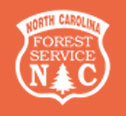Planning for Trees
(September 24, 2021)
Trees in the urban environment have been an object of interest for planners for many years. The American Planning Association has recently republished an article from its “PAS Reports” archives about street trees, which dates from 1968. That article notes that there are ordinances to preserve and plant trees in cities that date back to the 1850’s. The article discusses the aesthetic and environmental reasons for saving and planting trees, including heat mitigation, carbon sequestration and stormwater mitigation. It discusses some of the challenges of urban tree planting and preservation that planners and landscape architects were dealing with in 1968: conflicts between utilities and tree roots and tree crowns; appropriate species for the conditions in the urban environments; avoiding damage to trees during construction; planting in constrained areas. These things haven’t changed much in the last 50 years. And yet some things have changed. The article notes that they found only 4 municipalities in the US with ordinances for tree preservation on private property. Today there are many municipalities across the country with tree preservation ordinances. That’s good news. But even as communities become more aware of the benefits of trees and the need to include them in planning, the urban environment has gotten even more difficult for trees, with problems that planners in the 1960’s probably never foresaw. Longer summers, hotter daytime and nighttime temperatures, more extreme periods of rain or drought, stronger storms, and an invasion of foreign diseases and pests are all challenging urban trees today. Planners are having to think about ways to provide a more resilient urban forest, by such steps as providing larger root areas, and better engineering of planting areas for good soil and adequate drainage. Species selection is important, to provide trees that can handle drought and temperature extremes. Some cities are starting to use trees from warmer USDA zones to accommodate the heat increase.
Another consideration is greater diversity among the trees planted, so that if a disease or insect attacks a particular tree species, it will not be able to proliferate and kill off all the trees in an area. In a presentation at the Great NC Tree Conference, Dr. John Ball of S. Dakota University noted that genus diversity, rather than species diversity, should be an important component of tree planting ordinances. He noted the number of tree species that exist in Asian countries that also share a genus with trees in North America, and the number of pests and diseases, including Dutch Elm disease, Chestnut Blight, and the Emerald Ash Borer, that came from Asia and proliferated here through shared genera. He suggested that requiring no greater than 5% of any one genus in tree planting areas should be the standard for fending off disease and insect infestations.
This is a high bar, and one that may get resistance from the development community. It is an indicator, however, of the sort of thinking that we may need to consider to maintain a resilient urban forest.




